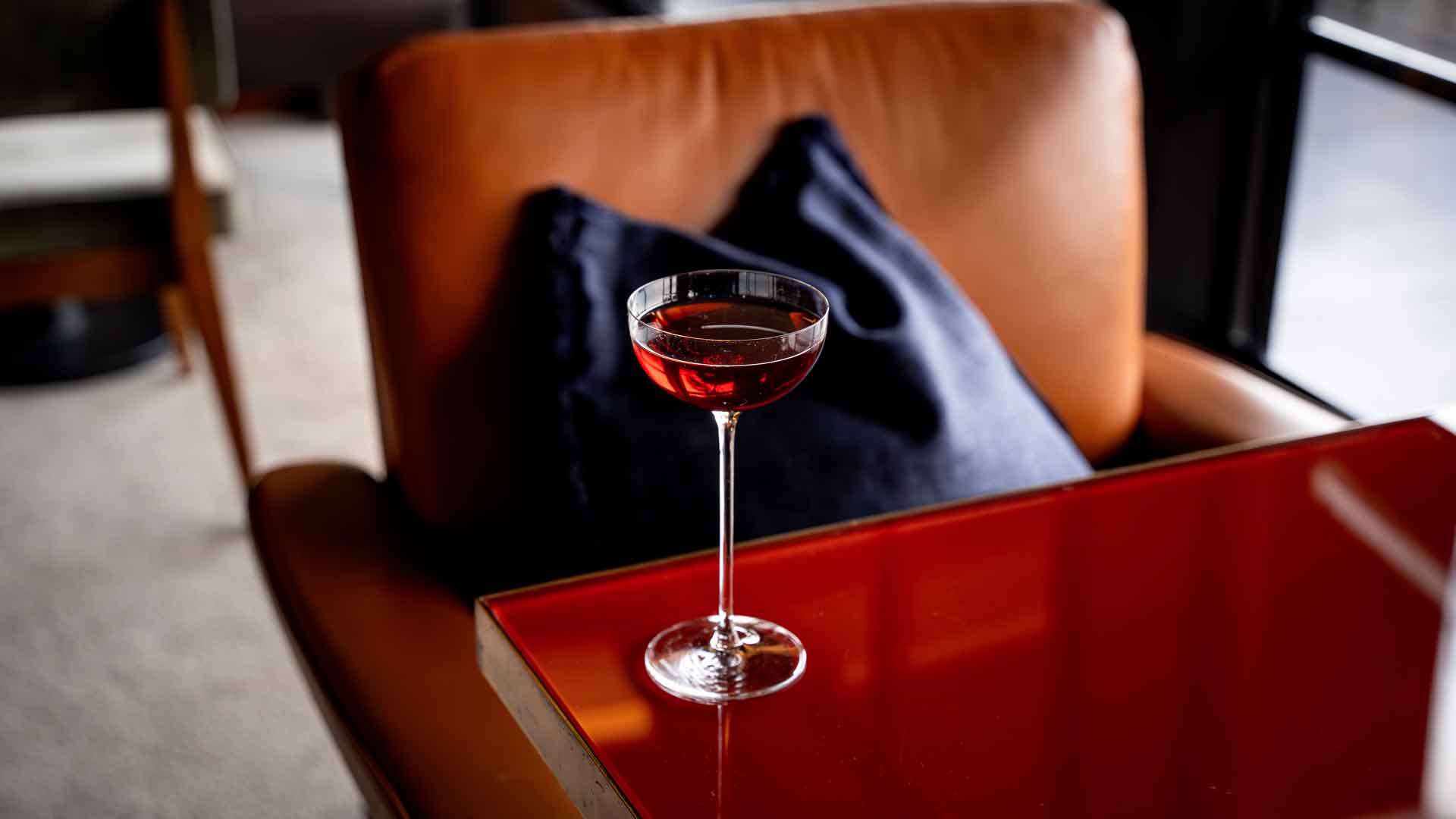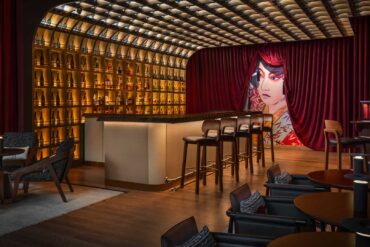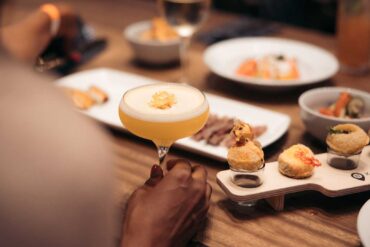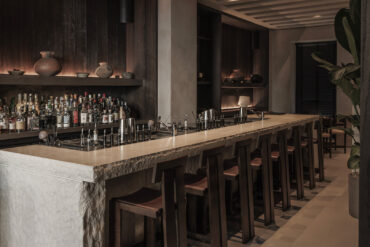The Blue Moon cocktail might not be as famous as some other classic drinks, but it’s got a unique charm all its own. Alongside the Aviation, it was one of the first cocktails to embrace violet liqueurs, giving it a distinctive flavor and color that sets it apart.
The Story Behind the Blue Moon Cocktail
Like many drinks from the pre-Prohibition era, the history of the Blue Moon cocktail is a bit hazy. It’s believed that Hugo Ensslin (1878-1929) is the man behind it, for a couple of reasons. First, the Blue Moon is closely related to the Aviation, a cocktail Ensslin created. Secondly, the earliest known recipe appears in the second edition of his book Recipes for Mixed Drinks (1917)—the last significant cocktail book published before Prohibition took hold.
So, the story revolves around Hugo Ensslin and the turn of the 19th to the 20th century. Beyond that, the details get fuzzy, except for the fact that the Blue Moon cocktail recipe has seen many variations over the decades.
The Many Twist on the Blue Moon Cocktail
The first significant change to the Blue Moon came right after Prohibition ended. For reasons unknown, vermouth and red wine were dropped from the ingredients list. Ensslin’s original version included them, but many bartenders in the 1930s left them out. Instead, they transformed the Blue Moon cocktail into a sort of Aviation by using a new American liqueur made from violet petals, berries, honey, orange peel, and vanilla, in place of crème de violette and maraschino.
This American producer used the original Blue Moon recipe to promote their liqueur, forging a strong connection between the two. So much so that, when the liqueur was discontinued in 1969, the Blue Moon cocktail almost faded into oblivion. If anyone did make it, they used a simple violet liqueur, which gave the drink a paler color.
A Forgotten Cocktail Makes a Comeback
By the time the American violet and berry liqueur went back into production in the fall of 2009, the Blue Moon cocktail had become a hidden gem—a treasure for those keen on exploring cocktail history. It’s no surprise that it featured in Ted Haigh’s book Vintage Spirits and Forgotten Cocktails (2009). Haigh suggests shaking the cocktail rather than stirring it in a mixing glass, as Ensslin originally did, and adds that “a bit of egg white and a lemon twist certainly don’t hurt.”
Blue Moon Cocktail, the Recipe
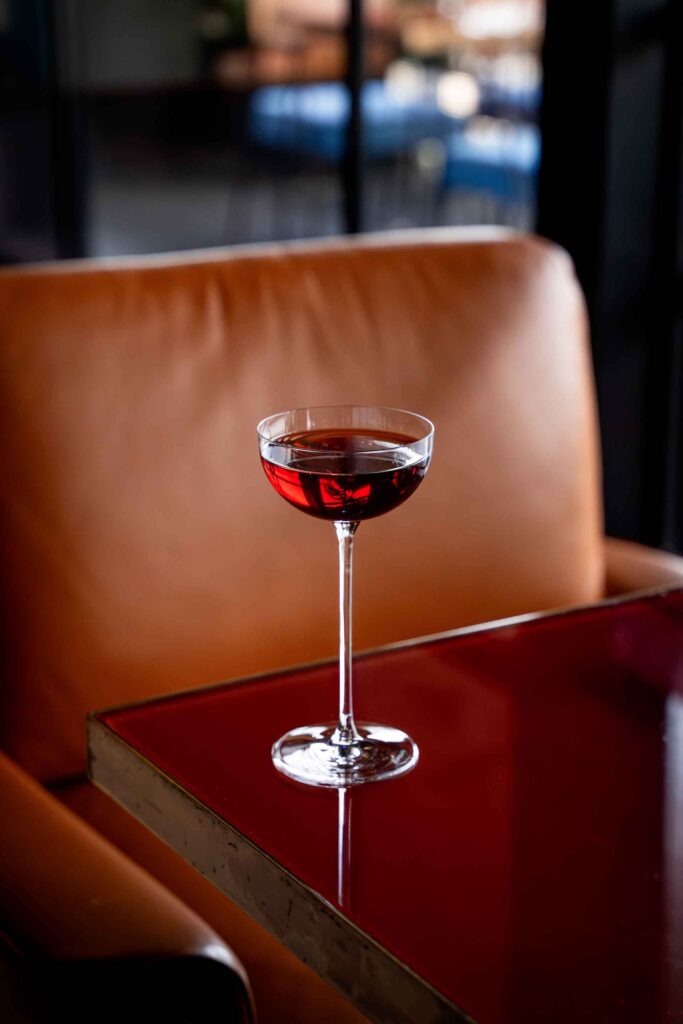
To honor the past, here’s the original recipe from Recipes for Mixed Drinks (1917), noting that the red wine should be light-bodied. For completeness, here are the ingredients from Ted Haigh’s version in Vintage Spirits and Forgotten Cocktails: 60 milliliters of gin, 15 milliliters of lemon juice, and 15 milliliters of the American violet and berry liqueur or crème de violette.
Ingredients
- 45 ml gin
- 15 ml dry vermouth
- 1 dash orange bitters
- 1 dash violet and berry liqueur
- Red wine to taste
Method
Grab a mixing glass and add all the ingredients except the red wine. Add ice cubes and stir until the mixture is well-chilled. Strain into a chilled coupe glass, then gently pour the red wine over a spoon to float it on top, avoiding any mixing with the other ingredients.
Garnish
None.
Photo by Julie Couder for Coqtail, location Ceresio 7 Milan – all rights reserved


